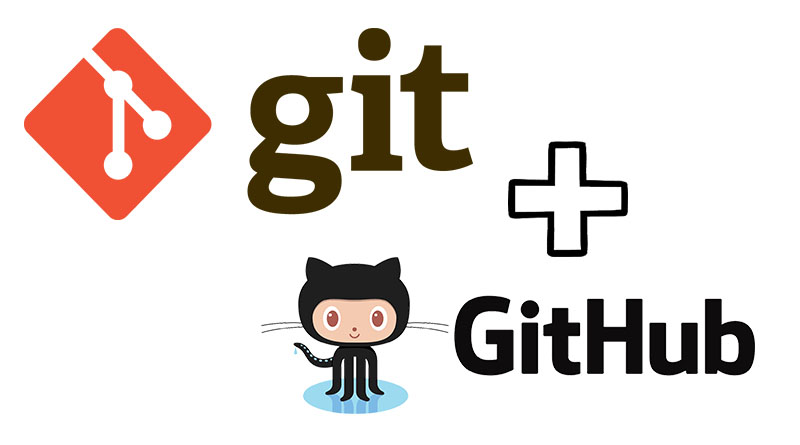Harnessing the Power of Version Control: An Introduction to Git and GitHub
 Dhanashri Saner
Dhanashri Saner
Welcome to the Day 8 of the #90DaysOfDevOps challenge.
Introduction
In today's fast-paced software development world, version control is a crucial tool that empowers developers to effectively manage and collaborate on their code. Git and GitHub have emerged as industry-standard solutions, revolutionizing the way teams handle version control. This blog provides a concise introduction to Git and GitHub, exploring their fundamental concepts and illustrating how they can unlock the true potential of version control. Prepare to dive into the world of efficient code management and seamless collaboration as we explore the power of Git and GitHub.
What is Version Control System
Version Control System (VCS) is a software tool that helps developers manage and track changes made to their code over time. It provides a systematic approach to organizing, storing, and retrieving different versions of files, allowing developers to collaborate, revert to previous versions, and maintain code integrity.
Types of Version Control Systems
There are two main types of version control systems:
1) Centralized Version Control System (CVCS)
In a CVCS, there is a central server that stores the entire codebase and its history. Developers have working copies on their local machines and interact with the central server to check out files, make changes, and commit them. Examples of CVCS include Subversion (SVN) and Perforce.
Limitations of the Centralized Version Control System:
Single Point of Failure: In a CVCS, the central server acts as a single point of failure. If the server goes down or experiences data loss, it can severely impact the ability to collaborate, retrieve code, and track changes.
Limited Offline Work: CVCS heavily relies on the central server for most operations. This means that developers may face limitations or complete inability to work offline or in situations where network connectivity is unreliable or unavailable.
Slower Performance: Operations in a CVCS, such as checking out files, committing changes, and retrieving history, require communication with the central server. This reliance on network access can lead to slower performance compared to DVCS, especially when dealing with large codebases or high network latency.
Dependency on Server Availability: In a CVCS, developers need constant access to the central server to perform various tasks. Any server maintenance, downtime, or network disruptions can disrupt the development workflow and hinder productivity.
2) Distributed Version Control System (DVCS)
In a DVCS, each developer has a complete copy of the code repository, including its history, on their local machine. Developers can work independently, commit changes locally, create branches, and later synchronize with other repositories. This decentralization allows for offline work and provides redundancy. Git, Mercurial, and Bazaar are examples of DVCS.

Both types of version control systems offer benefits and trade-offs, and the choice between them depends on specific project requirements and team preferences.
What is Git?
Git is a distributed version control system (DVCS) that allows developers to track changes made to their code over time. It provides a way to manage and organize different versions of a project, enabling collaboration among multiple developers. With Git, each developer has a local copy of the entire project, including its complete history. This allows them to work on the code independently, make changes, create branches to experiment with new features and merge those changes back into the main project seamlessly. Git offers powerful features like branching, merging, and conflict resolution, making it an essential tool for efficient code management and team collaboration.
Architecture of Git
Git's architecture can be conceptualized with three layers: the working directory, the staging area (index), and the repository. Each layer plays a crucial role in managing and tracking changes in a Git project.
Working Directory: The top layer where developers interact with project files on their local machine.
Staging Area (Index): An intermediate layer where developers selectively add and prepare changes to be committed. Developers use the
git addcommand to selectively add modified files from the working directory to the staging area.Repository: The core layer that contains the complete history and metadata of the project, storing commits, trees, blobs, and tags.

Git Terminologies
Repository: A repository, often referred to as a "repo," is a collection of files and folders, along with the complete history of changes made to them.
Commit: A commit represents a specific version of the project at a given point in time. It captures changes made to the files and includes metadata like author, timestamp, and a unique identifier.
Branch: A branch is an independent line of development within a repository. It allows for separate and parallel work on different features or bug fixes.
Merge: Merging combines changes from one branch into another. It integrates the changes made in a source branch into a target branch.
Pull: Pulling involves fetching changes from a remote repository and merging them into the local repository.
Push: Pushing refers to sending local commits to a remote repository.
Remote: A remote is a version of the repository stored on a different machine or server. It allows for collaboration and sharing of code among developers.
Fork: Forking is the process of creating a personal copy of a repository within a version control hosting service. It enables developers to freely experiment and make changes without affecting the original repository.
Clone: Cloning creates a local copy of a remote repository. It enables developers to have their own working copy and a full history of the project on their machine.
Pull Request: A pull request is a way to propose changes to a repository. It notifies others about your changes and allows them to review, comment, and potentially merge the changes into the main branch.
What is GitHub?
GitHub is a web-based platform that provides hosting for Git repositories. It serves as a central hub for developers to store, manage, and collaborate on their code. It offers features such as version control, issue tracking, pull requests, code review, and project management tools. GitHub allows developers to share their code, contribute to open-source projects, and facilitate seamless collaboration among teams.
Difference between Git and GitHub

Conclusion
By harnessing the power of version control with Git and GitHub, developers gain the ability to track changes, collaborate seamlessly, and streamline their software development process. With Git's distributed architecture and GitHub's robust features, teams can unleash the full potential of efficient code management, collaboration, and continuous improvement. Embrace Git and GitHub, and empower your development journey with the tools that drive innovation and success.
Subscribe to my newsletter
Read articles from Dhanashri Saner directly inside your inbox. Subscribe to the newsletter, and don't miss out.
Written by

Dhanashri Saner
Dhanashri Saner
Data Engineer @Midoffice Data